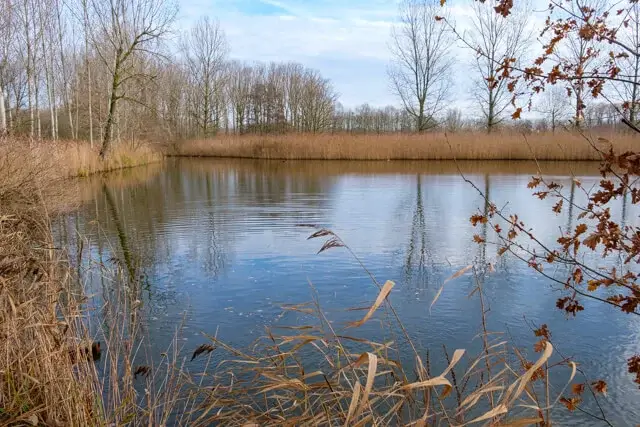Walking route
Salt marshes of the Durme.


Salt marshes of the Durme.
Walk from Driegoten across the Scheldt dyke along the Drie Goten forest to the Durme estuary. Here you will find the unique nature reserve the salt marshes of the Durme. Along the banks of the Durme you walk further to the nature reserve the Bunt, a water-rich area with many ponds and fish ponds. Via the inner dike, with a beautiful view of the new flood area, you reach the Scheldt dike and the starting point again.
Distance: 8 km.
Time: 2h00.
Grade: Easy.
Type: Circular.
Gps Track: Yes.
Route description: Yes.
Wheelchair: Not suitable.
Dog: Allowed on leach.
Height gain: Flat.
Trail: Paved and unpaved.
Marking: Walking nodes.
Hiking shoes recommended.
The Bunt.
You depart along the banks of the Scheldt to the confluence of the Durme and the Scheldt. The unique nature reserve The salt marshes of the Durme is one of the few remaining freshwater salt marshes that still exists in our country. The next nature area is the Bunt, an old peat extraction area. Most peat pits were filled in during the reconstruction of the Scheldt at the end of the 19th century. The remaining pits have now become fish-rich ponds. Along the inner dike on the new flood area, it goes back in the direction of Driegoten. The name Driegoten refers to the breaches that the local population used to hit in the dike here in the event of a flood risk. The areas behind them were flooded in a controlled manner, so that the houses in the spacious surroundings remained protected from flooding.
Download PDF for walking nodes to follow and map.
The paths in the Bunt can be soggy.
POI 1 - The Bunt.
The Bunt is a 25-hectare nature reserve at the confluence of the Durme and the Scheldt. It originated on the site of an old peat extraction area. Most peat pits were filled in during the reconstruction of the Scheldt at the end of the 19th century. The remaining pits have now become fish-rich ponds. You walk along the green domain forest of Driegoten. On the left bank of the Scheldt near the mouth of the Durme you will find the unique area 'the Schorren van de Durme'. It is one of the few remnants of freshwater salt marshes that our country still has. Reeds and willows form impenetrable forests that resemble tropical mangroves. You can admire these salt marshes from the dyke. Only a few times a year will the flood area salvage water during storm tides. The rest of the year the Bunt shows off its rare mud flats and salt marshes. On April 17, 1966, at Driegoten, at the confluence of the Durme and Scheldt, a memorial was erected in honor of writer Filip De Pillecyn, "glorifying the land between Durme and Scheldt." The impressive monument was sculpted by the Antwerp artist Albert Poels, commissioned by the Flemish Tourist Association. It consists of a number of characters who function in the most famous novels of the literator: on the one hand one recognizes the bullies Rochus lying down with a dog licking its wounds. Above the pilgrim stands the stately and proud person of the soldier Johan. He looks at Hamme, his birthplace. Along the waterfront the sculptor placed Leda and the ferryman from his novel "The Ferryman and the Lady". All these figures are connected by a graceful loop, a symbol of the mist rising from the water.
No additional information.















































